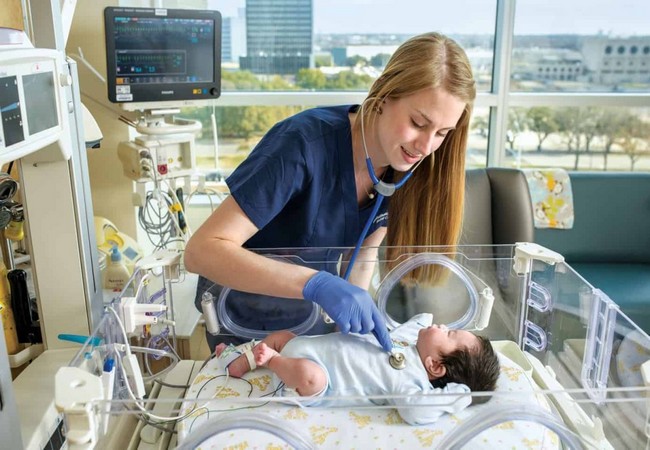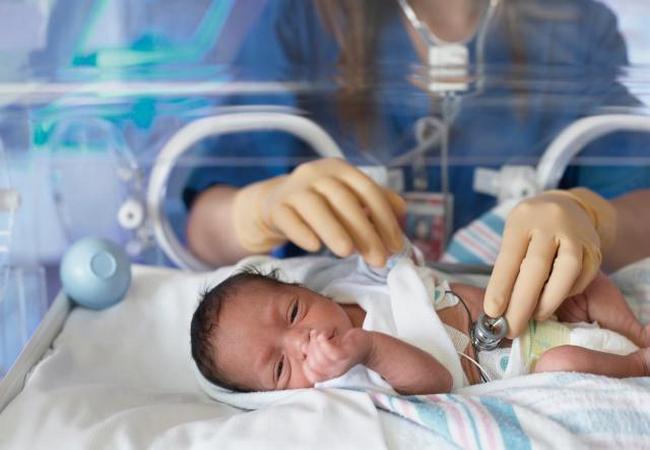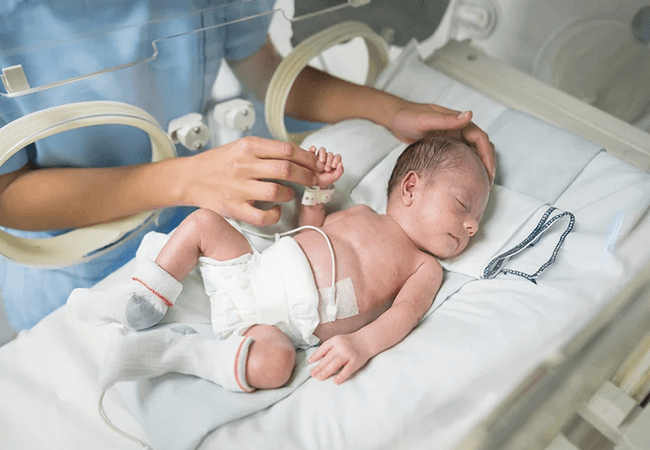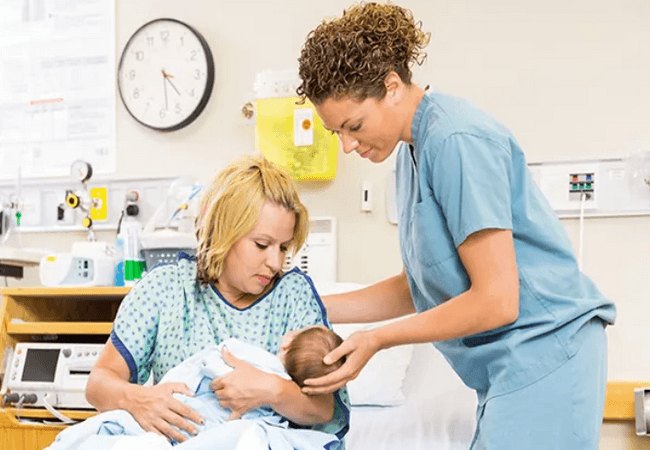High Risk Newborn Assessment Skills and Diagnosis
Assessment of High Risk Newborn or Neonate:
Risk assessment is the determination of quantitative or qualitative estimate of risk related to a e well-defined situation and a recognized threat (also called hazard). Quantitative risk assessment requires calculations of two components of risk (R): the magnitude of the potential loss (L), and the probability (p) that the loss will occur.
An acceptable risk is a risk that is understood and tolerated usually because the cost or difficulty of implementing an effective countermeasure for the associated vulnerability exceeds the expectation of loss. “Health risk assessment” includes variations, such as the type and severity of response, with or without a probabilistic context.

Assessment of the newborn is done during and after the transition period of 4-6 hours of life the nurse determines that the infant is physiologically stable by skilled examination and assessment of the infant’s general appearance (skin), thermoregulatory effort and different body systems.
You can read: Classification or Types of High Risk Newborn or Neonates
High Risk Newborn Assessment Skills:
Assessment skills required to assess high risk newborn or neonate includes-
- The birth of a baby is a significant event in the life of its parents. For many mothers, the minutes after birth are full of many emotions, including concern about the baby’s condition.
- At birth, the midwife’s immediate concern is usually related to the baby’s ability to accomplish the initial changes that are required in order to adapt and survive outside the uterus, such as the physiological changes in heart function.
- A midwife’s ability and attitude at this time are extremely important in providing the parents with adequate and understandable information.
- Conversely, the baby’s condition may provoke anxiety at birth or there may be an obvious physical abnormality. Occasionally, an abnormality that was not detected antenatal may present at or soon after birth. For example, the baby may exhibit signs of a chromosomal abnormality, heart conditions or limb abnormality.
- The midwife’s sensitivity and level of professional experience and the actions that she takes will enable the parents to “cope’ as the initial impact of the issue of concern sinks in. However, it is paramount that the midwife voices her concerns to the parents followed by an explanation regarding the action that she is going to take.
- The immediate care and handling of the baby should provide the parents with a professional and appropriate role model at all times; for example, limbs are not handles the baby demonstrates good temperature control encourage good role modeling, to particularly in relation to the prevention of sudden infant death syndrome. Information and rationales given should be informative and appropriate to the individuals concerned.
- The midwife is responsible for the assessment and recording of the initial vital signs of the baby (see sections below entitled ‘Assessment at birth’, “Thermoregulation’ and the chest’), thus providing a comprehensive record of the baby’s condition at birth and during the first few hours of life.
- The initial introduction of the baby to its parents and when the midwife assists the mother with the baby’s first feed are important landmarks. Both these events link with the need to observe the initial parent-baby attachment process. Factors arising before and during pregnancy can affect these processes – for example, maternal abuse, domestic violence, environmental and social concerns (for example, housing and sanitation) or the circumstances under which the pregnancy was conceived.
- If this initial attachment process is affected, good communication both verbally and in written format with members of the midwifery team and other healthcare providers is paramount, as it enables all professionals involved to be well informed of the situation and assists effective multidisciplinary communication.
- Comprehensive record keeping is a necessity if the midwife is to demonstrate that she has acted in accordance with her professional responsibility, local guidelines/procedures and parental wishes.
- The woman’s record should provide information regarding an agreed plan of care, midwifery/obstetric and paediatric involvement including actions taken and why, any changes required and the rationale for so doing, maternal consent when required, observations performed and any other information as it arises.
- Information on both the antenatal and intrapartum periods may relate to the condition of the baby at or soon after birth. Reading previous notes made by other staff and providing comprehensive notes at the time of giving care are not a luxury, they are a professional necessity.
- Ineffective breathing pattern related to pulmonary and neuromuscular immaturity, decrease energy and fatigue.
- Ineffective thermoregulation related to immature temperature control and decreased subcutaneous body fat.
- Risk for infection related to deficient immunologic defect.
- Risk for fluid volume deficit or excess related to immature physiologic characteristics of preterm infant and/ or illness.
- Imbalance nutrition: Less than body requirement related to inability ingest nutrients because of immaturity and /or illness.
- Risk for impaired skin integrity related to immature skin structure, immobility, decrease nutritional state invasive procedures.
- Risk for injury from variable cerebral blood flow, systems hypertension or hypotension, and decreased cellular nutrients related to immature central nervous system and physiologic stress response
- Pain related to procedures, treatment, handing.
- Delayed growth and development related to preterm birth, unnatural NICU environment, separation from parents.
- Interrupted family process related to situation / maturational crisis, knowledge deficit, interruption of parental attachment process.
- Anticipatory grieving related to unexpected birth of high-risk infant, grave prognosis, and /or death of infant.
You can read: How to Identify High Risk Newborn?
Differential Diagnosis of Newborn Assessment:
1. Pulmonary:
- Respiratory distress syndrome/hyaline membrane disease;
- transient tachypnea of the newborn/wet lung;
- meconium aspiration syndrome;
- pleural effusion;
- pneumothorax;
- Congenital lung malformations.
2. Infectious:
- Sepsis,
- Pneumonia (GBS, other infectious organisms).
3. Cardiac:
- Congenital heart disease;
- Persistent pulmonary hypertension of the newborn.
4. Hematologic:
- Blood loss/anemia,
- Polycythemia.
5. Anatomic:
- Tracheoesophageal fistula,
- Congenital diaphragmatic hernia,
- Upper airway obstruction.
6. Metabolic:
- Hypoglycemia,
- Inborn errors of metabolism,
- Acidosis.
7. Neurologic:
CNS:
- Trauma or intracranial bleed,
- Drug withdrawal syndromes,
- Seizures.
More questions related to this article:
- Define assessment of high risk newborn.
- What do you understand by assessment of high risk newborn?
- What are the assessment skills required to assess newborn at risk?
- What are the nursing diagnoses of the high risk newborns?
- Mention the nursing diagnoses of the high risk newborns.
- Give the nursing diagnoses of the high risk newborns.
- Write down the differential diagnosis of newborn assessment.
- Discuss the differential diagnosis of newborn assessment.











